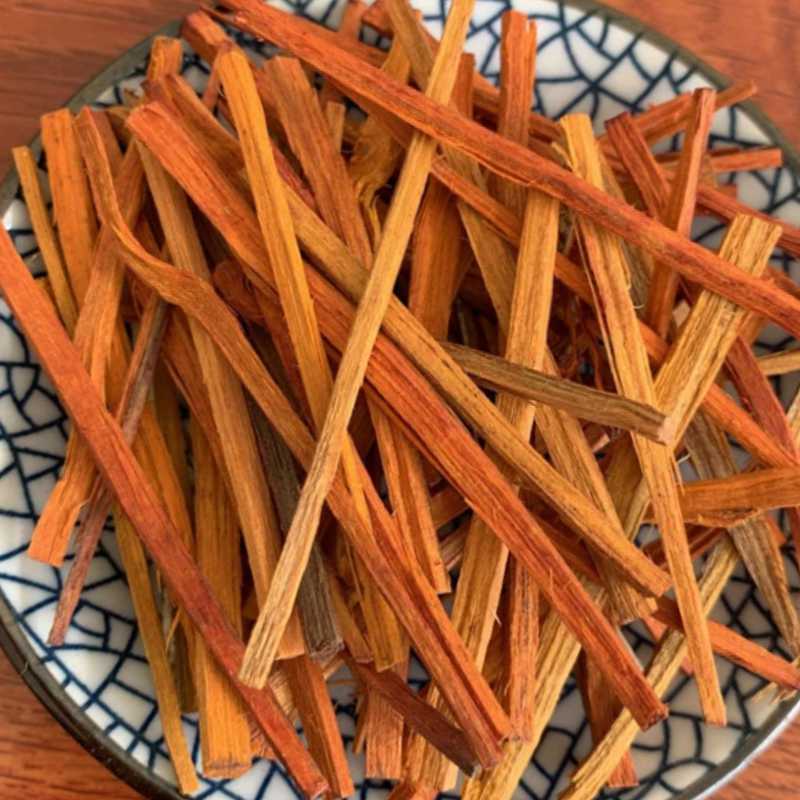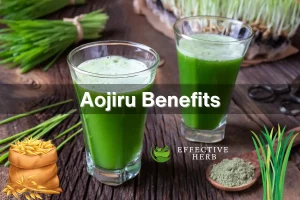Discover the health benefits of Biancaea Sappan wood

In our modern lives, we don’t often think about the healing power of plants and herbs. But have you ever wondered what it was like to live in a time when your doctor was an herbalist?
It’s true! Your ancestors probably relied on the wisdom of plant-based medicine before antibiotics or vaccines. And even though modern science has helped us understand and treat many illnesses, we still take advantage of natural remedies today—like Sappan wood.
Sappan wood is an ancient tree that grows in the rain forests of South India. It’s also known as pathimugam, which means “five medicines” in Tamil—a nod to its ability to treat multiple ailments ranging from fevers to arthritis. Sappan wood has been used for hundreds of years as a source of medicine. Modern research has also confirmed some of its traditional uses.
What is Sappan Wood
Sappan Wood, also primarily known as Biancaea Sappan, is often referred to as “East Indian RedWood” due to the pink color it produces in water. You might be wondering what pink water is?

Suppose you have the privilege of being a guest in Kerala state of India. In that case, The hosts present a pink water as a welcoming drink made by boiling or soaking sappan wood, or Pathimugam as locals call it. This pink water offers some medical benefits, And you might have guessed it right, the taste is compromised if you want a healthy diet. Your taste buds need to adjust according to the revolting sensation of this healthy pink water.
Sappan Wood, a.ka. Caesalpinia sappan is a small tree with a maximum height of 30 feet and is mostly found in India and China. In Europe, it is called “Brezel wood” due to its relation to brazilwood (Paubrasilia echinata). The heart-wood of the tree is used further for medicinal or ornamental purposes.
General Information on Biancaea sappan Wood
Biancaea sappan / Sappan Wood is a small Thorny tree and is a species of flowering tree in the family of legume and is mainly native to many tropical Asian countries.
Biancaea has resistance toward termites and pests but can be infected by twig dieback due to zinc deficiency.
Pathimugam is also majorly used to make natural dyes in homes in ancient times and still in this modern age. Shavings of the heartwood of sappan help disinfect when added to boiling water and give a distinctive pink color hence the “pink water of Kerala.”
Medically and health-wise, it is good for the liver, spleen meridians, and heart. Sappan has its unique place among traditional medications famous in Asian countries like India and China. One of the significant benefits is it helps reduce inflammation.
Acidic composition
Sappan Wood has mainly two types of acids:
- Gallic Acid
- Tannic Acid
Gallic Acid
Gallic acid in Biancaea sappan / Pathimugham is a well-known natural antioxidant. Which is also suitable for skin tone; it reduces dark areas under the eyes and helps clear sunspots. It is classified as phenolic acid. And found in gallnuts, witch hazel, tea leaves, sumac, and oak bark.
From the 12th to 19th centuries, Gallic acid was an essential part of “Iron Gall Ink,” standard European ink for drawing and writing.
Tannic Acid
Tannic acid is a weak acid and is a type of polyphenol. It is found in the nutgalls on the twigs of certain oak trees and Sappan Wood trees and is mostly formed by insects on twigs of trees.
Tannic acid is used in making natural dyes, and when applied to rusting iron, it passively inhibits corrosion. Tannic acid reacts with corrosion and thus prevents further corrosion from taking place.
Like many other acids used in the food and health industry, Tannic acid is also recognized as safe for food by United State’s Food and Drug Administration, for use in baking mixes, alcoholic and non-alcoholic beverages, baked goods, frozen dairy items, candies soft or hard, meat products and also animal’s fat products.
The tannic acid found in sappan or Pathimugam, combined with magnesium and activated charcoal, was used to treat toxic substances like mushroom poisoning and ptomaine poisoning.
Tannic-acid soaked bandages were also used in world war I to treat and reduce burns, but soon after the war it was abandoned due to more modern treatment.
Healing benefits of Sappan Wood (Pathimugham)
Everything in the universe has a purpose with pros and cons. God has created trees with many different responsibilities and unique roles in human lives. Humans have been discovering the practical benefits of trees over time, shifting toward more modern technologies and using better and more effective herbs and trees.
Sappan Wood / Biancaea Sappan is no exception; it has had its uses in the past and is still being used in some parts of the world, especially in India’s Kerala state.
Biancaea Sappan (sappan wood) has many uses and antibacterial and anticoagulant properties while also highly thermogenic. Having antibacterial properties, sappan wood can be used to treat and disinfect infections and toxic poisons caused by wild herbs and mushrooms. Anticoagulant properties of Sappan wood help thin the blood and hence increase the life of the heart and reduce the risk of heart diseases.
Based on such properties and the presence of Gallic and Tannic acids, Sappan wood can have the following health benefits:
Sappan wood to prevent (prophylaxis) COVID-19
A study conducted related to natural components with potential anti-2019-nCoV revealed that Sappan wood used with galangal, Citrus syrup, and Curcuma syrup, if taken in daily life, can act as prophylaxis against COVID-19. For a more detailed study, follow the original research.
A study on Benefits of Caesalpina Sappan Wood on Lung Cancer
Lung cancer is a severe condition that can be devastating for patients. The majority of lung cancer is the Non-Small Lung Carcinoma (NSLC). Researchers used brazilin as an antitumor agent against non-small lung carcinoma cell line A549 cells. Results showed that brazilin was able to induce apoptosis in A549 cells. Read more here.
Antimicrobial Benefits of Sappan Wood
The best way to enjoy sappan wood’s antimicrobial and antibacterial benefits is to use it as a pink water. How to make pink water? You may ask! It’s simple, take some shavings of the heartwood of sappan (Biancaea Sappan) wood and boil it in water. Make sure not to use more than 6 to 7 grams of sappan wood. Traditional herbal doctors restrict its use by more than 10 to 15 grams as in this range, it becomes toxic.

Also, some studies have shown the presence of methanol so that sappan wood can help in skin infections and joint infections.
Lightens Skin tone and limits Acne problem
Traditionally, Sappan wood water is known for skincare. It improves and lightens skin color, disinfects skin infections, and reduces acne problems. Continued use of Sappan wood water (Pathimugam) brings freshness to the face and helps it glow better.
Strengthen Brain against Seizures 🧠
Sapan wood, used in Ayurveda for thousands of years, has been found to have health benefits for those who have seizures and other disorders.
Sapan wood is an ancient healing source used today to treat epilepsy and other disorders. One study showed that the sappanwood extracts had reactive functions. Another study showed that the pathimugam could fight against seizures.
People who have convulsions due to epilepsy and other disorders should reap the benefits of sappan wood.
Anticoagulant Benefits of Sappan Wood for Heart ♥
Sappan wood has anticoagulant benefits, which are suitable for the health of your heart. According to one study, that Biancaea has “Brazilein” which causes the pink pigment in sappan wood’s water (Pathimugam). According to your taste, Sappan Wood tea or water can be enjoyed with a little bit of lemon, garlic, or cinnamons.
A word of caution as sappan wood is high in thermogenic and garlic and cinnamons as well. So do not overuse cinnamons and garlic quantities in sappan wood tea.
Antiallergic benefits of sappan wood 🤧
If you’ve ever had allergies, then you know how they make your life feel miserable. The symptoms are so bad that sometimes you feel hopeless. But guess what? Nature has also provided its solution. You just have to look for it.
There’s an ancient plant that has been used for centuries to treat allergies. And it works! It’s called sappan wood.
Most people don’t know about this fabulous plant because they don’t live in Southeast Asia, where it grows naturally. But you can buy sappan wood supplements online and use them to treat your allergies naturally.
Sappan wood contains compounds that help fight off the symptoms of all kinds of allergies, from seasonal allergies to food allergies even to pet dander. It also has anti-inflammatory properties that can help reduce inflammation in the body and reduce pain caused by inflammation-related conditions like arthritis or other joint problems.
If you have severe allergies, you should try taking sappan wood supplements daily as part of your treatment plan.
Antioxidant benefits of sappan wood ☕
You may know that tea is an excellent source of antioxidants. But did you know that it can also cause severe acidity and caffeine addiction? Try sappanwood tea instead if you’re looking for a great tea substitute that will give you all the antioxidants minus its demerits. A study has shown that sappanwood provides more antioxidants and better protection from free radicals than quercetin found in antioxidant-rich foods like blueberries.








One Comment
Comments are closed.